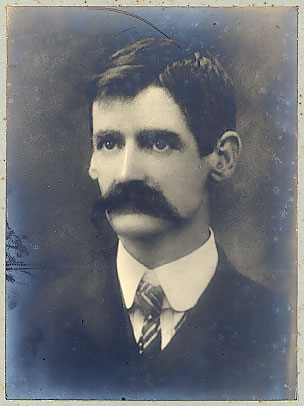The directory «Plots»
Lawson Henry
(1867—1922)

Henry Lawson was an Australian writer and poet. Lawson and his contemporary Banjo Paterson are the best-known Australian poets and fiction writers of the colonial period. Lawson was born on the Grenfell goldfields of New South Wales. His mother was Louisa Lawson, a prominent suffragist and owner/editor of The Dawn journal which was partly responsible for Australia becoming one of the first countries to introduce adult female suffrage. His father was Niels Larsen, a Norwegian seaman who settled in Australia; on Henry's birth, the family surname was anglicised and Niels became Peter Lawson. Henry suffered an ear infection at the age of seven that left him with partial deafness and by the age of fourteen he had lost his hearing entirely. Most of his works focuses on the Australian bush, such as the desolate Past Carin’, and is considered by some to be among the first accurate descriptions of Australian life as it was at the time.[citation needed] Like the majority of Australians, Lawson lived in a city and had limited experience of outback life.
During his later life, the alcohol-addicted writer was probably Australia's best-known celebrity. At the same time, he was also a frequent beggar on the streets of Sydney, notably at the Circular Quay ferry turnstiles. He was gaoled at Darlinghurst Gaol for drunkenness and non-payment of alimony, and recorded his experience in the haunting poem "One Hundred and Three" - his prison number - which was published in 1908. He refers to the prison as "Starvinghurst Gaol" because of the meagre rations given to the inmates. On his death in Sydney in 1922 he was given a state funeral, attended by the Prime Minister W. M. Hughes and the Premier of New South Wales Jack Lang (who was the husband of Lawson's sister-in-law), as well as thousands of citizens. He is interred at Waverley Cemetery.
Henry Lawson was featured on the former paper Australian ten dollar note issued in 1966 when decimal currency was first introduced into Australia. This note was replaced by polymer notes in 1993. Lawson was pictured against scenes from the town of Gulgong in New South Wales.
Australia, 1949, Henry Lawson
Australia, 1991, «The Drover's Wife» (Henry Lawson)